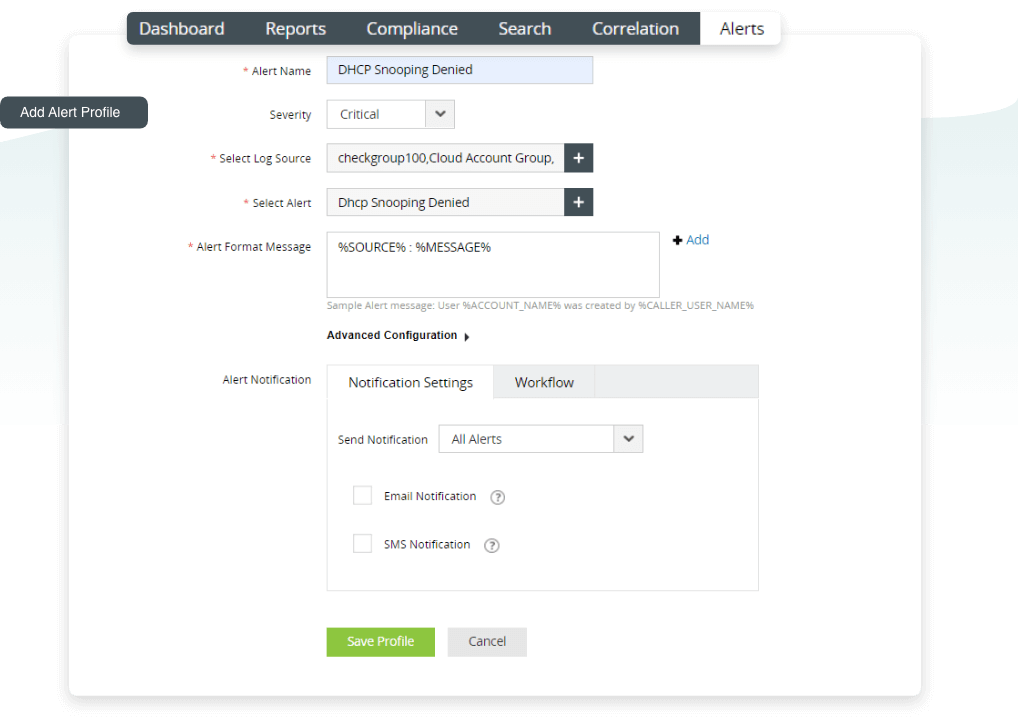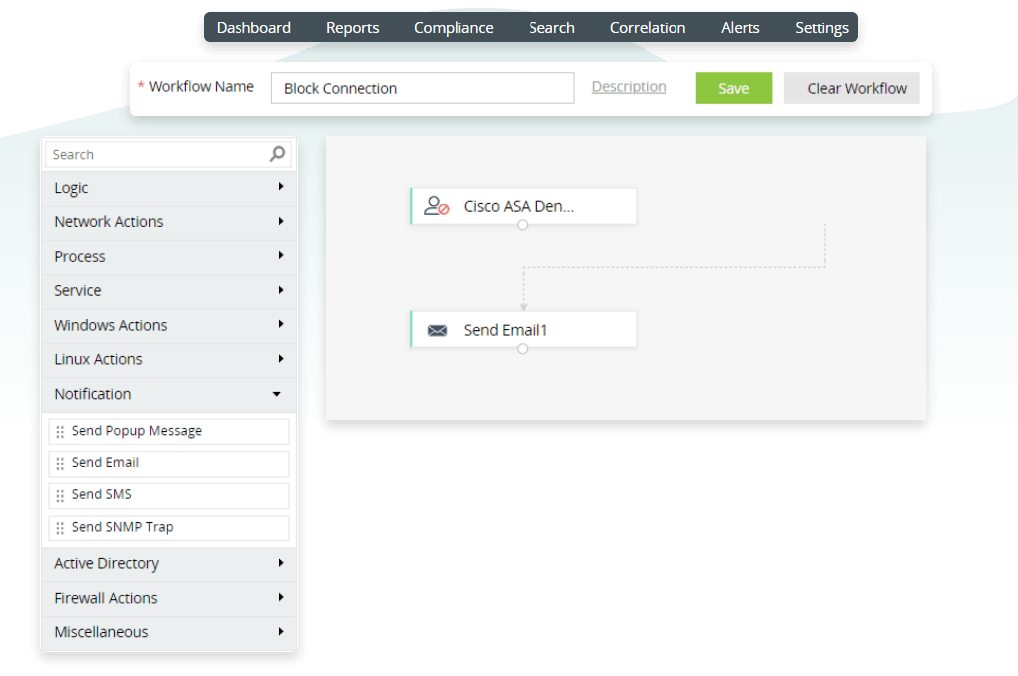Man in the middle
attack
- Attack library
- What is a man in the middle attack?
- What is a man in the middle attack?
- Types of MITM
- Different stages of a MITM attack
- Detecting a MITM
- How to prevent a MITM:
- Detect and mitigate MITM attack using Log360
What is a man in the middle attack?
A man-in-the-middle (MITM) attack is a popular cyberattack where the attacker intercepts, relays, and even alters the communication between two parties who believe they are communicating with each other and have no knowledge of this unauthorized interception.
The attacker can capture and manipulate sensitive personal information, such as login credentials, account details, or credit card numbers in real time or even impersonate either party with a MITM attack. These attacks can target sensitive information, including online banking, social media, email, and instant messaging. This could lead to malicious activities like impersonating either party or launching subsequent attacks, such as DoS attacks.
During these attacks, cybercriminals insert themselves in the middle of data transactions or online communication. This is analogous to eavesdropping a private communication between two parties to get confidential information. There are many different ways to go about it. Let's see how.
Types of MITM
- IP sniffing:
The attacker intercepts unencrypted packets moving through the network and gains unauthorized access to sensitive data. The the attacker can read, modify, or even drop packets, without either party being aware. - Email hijacking:
The attacker intercepts and modifies email messages between two parties by exploiting vulnerabilities in email servers or by tricking the user into revealing their login credentials. In addition to reading, modifying, and deleting messages, they can even send emails on the victim's behalf, which can be used to spread malware. - SSL stripping:
The attacker downgrades a secure HTTPS connection to an unencrypted HTTP connection through exploiting vulnerabilities in web servers or by tricking the user into connecting to a malicious Wi-Fi network. The attacker can intercept the unprotected data. - DNS spoofing:
This is the most common type of MITM attack where the attacker intercepts and redirects DNS traffic by exploiting vulnerabilities in DNS servers or by tricking the user into connecting to a malicious Wi-Fi network. The attackers can then send spoof websites and trick the victims to launch malware attacks. - Wi-Fi eavesdropping:
The attacker sets up an unsecured Wi-Fi network, then intercepts and monitors the Wi-Fi traffic of any device that connects to it. Afterward, these attacks utilize IP sniffing to read, modify, and drop packets, without either party being aware. - Cache poisoning:
The attacker exploits vulnerabilities in a caching system to inject malicious data into the cache. This malicious data is served to users who request data from the cache, instead of the legitimate data.
Different stages of a MITM attack
Reconnaissance:
The attacker gathers information about the target, such as their IP address, operating system, and browser type.
Modification:
The attacker modifies the intercepted communication. This could involve changing the content of the message, or adding or removing data.
Interception:
The attacker intercepts communication between the target and the intended recipient through different methods.
Re-encryption:
The attacker re-encrypts the modified communication and sends it to the intended recipient.
Decryption:
The attacker decrypts the intercepted communication by exploiting the vulnerabilities in cryptographic algorithms.
Masquerading:
The attacker impersonates the target or the intended recipient to the other party with a forged IP address.
Detecting a MITM
IP Tracking: Monitor the changes in IP addresses associated with the session during transit.
- MITM attacks often involve the interception and redirection of network traffic. By monitoring the IP addresses associated with a session, it's possible to detect unexpected changes or deviations.
- If an IP address suddenly changes to an unfamiliar or suspicious range during a session, it might indicate that the traffic is being rerouted through an attacker's system.
Real-time monitoring tools: Employ real-time monitoring tools that can give insights into the current security posture by continuously monitoring your network and provide real-time detection and alerts on suspicious activities.
- These tools constantly scan and analyze network traffic for unusual activities.
- They detect sudden spikes in data transfer rates, unusual login attempts from unrecognized devices, or unexpected changes in network protocols—all of which could signal a MITM attack.
- By monitoring the network in real-time, these tools can quickly identify and alert administrators to potential MITM activities as they occur.
Real-time correlation: Employ solutions that can identify potential threats in real time by comparing and correlating network activities against known attack patterns or anomalous patterns.
- Real-time correlation can identify patterns that are typical of MITM attacks, like the interception of SSL/TLS connections, ARP spoofing, or DNS tampering.
- By correlating different data points (like login times, IP addresses, and traffic volume), these solutions can detect complex attack patterns that might not be obvious from a single data source.
Threat intelligence: Use solutions that can use threat intelligence feeds to identify known attack vectors, including common MITM attack techniques and indicators of compromise (IOCs). By integrating this intelligence, security solutions can effectively recognize and respond to MITM attacks.
For example, if a known MITM attack involves a specific type of SSL certificate manipulation, the system can be set up to specifically look for this pattern in network traffic.
0 4How to prevent a MITM:
- 1
Make sure to use secure data transmission protocols like HTTPS.
- 2
Ensure that your organization complies with relevant standards and regulations, which often include provisions for preventing and detecting MITM attacks.
- 3
Always use MFA to enhance security, since it requires more than one method of authentication.
- 4
Continually monitor SSL/TLS certificates for unexpected changes or anomalies, which could indicate that a certificate has been compromised or a fake certificate has been installed to facilitate an attack.
- 5
Collect and manage logs from various sources within your IT environment, such as firewalls, routers, switches, servers, and endpoints.
- 6
Keep security software up-to-date to protect against known vulnerabilities and threats.
- 7
Correlate events across different systems and networks to detect potential MITM attacks. For instance, if an internal device starts broadcasting ARP replies without a corresponding request, it could be an indicator of ARP poisoning.
- 8
Create employee and user awareness about the risks associated with MITM attacks and the precautions to take to avoid them.
SIEM solutions offer a comprehensive approach to security. Beginning with network log analysis, these systems scrutinize network traffic to identify any unusual patterns or anomalies. This initial analysis aids in threat detection. Subsequently, event correlation links stand-alone events from various sources. For instance, if there's a new location for the use of a user's credentials, followed by a suspicious certificate change or unexpected data flow, the SIEM can correlate these events. This holistic process culminates in the generation of real-time alerts for security teams, facilitating prompt investigations and responses to potential threats. SIEM seamlessly integrates log analysis, event correlation, and alert generation to fortify cybersecurity measures.
Detect and mitigate MITM attack using Log360
Learn how to set up correlation rules, alerts, incident workflow and customize them to detect and remediate MITM attack.
Real time alerts
We can create customized alert profiles for MITM attacks that matches the usual attack profile or we can also create custom correlation rules for attacks like IP sniffing and map it with alerts. Different sets of alert rules can be configured based on specific requirements. We can set up notifications for the alert either through a mail or SMS.


Create Workflows
In case of a adversary in the middle attack, like DHCP snooping, we can configure the immediate actions to be taken in the form of workflows. In this case we can immediately denying access through the CISCO device, stop the process and notify the admin to reduce the impact of the attack.
Investigation through reports
EventLog Analyzer has redefined reports that can be monitored for specific attacks. You can select reports relevant to MITM attacks and add them to incidents For MITM attacks, Rotten potato attack patterns, DHCP snooping reports are some of the reports that can help.



